It has been accepted that the soldiers of Anders' army are collectively called Poles. The Polish army established in the USSR, however, consisted of representatives of many nationalities, former citizens of the Second Polish Republic. Some deserted, others died for their common homeland. It's worth recalling their history.
Before the Second World War, the Polish Eastern Borderlands were a real mix of nationalities, religions and cultures. This is where the vast majority of recruits for the Anders Army came from. They belonged to thousands of exiles deported deep into the USSR after September 17, 1939. Apart from Poles, they were also Belarusians, Ukrainians, Jews, Tatars, Lithuanians, Armenians ...
A real Pole according to NKVD
The provisions of the Sikorski-Majski agreement did not contain any nationality restrictions. Also the so-called the amnesty of August 12, 1941 concerned all Polish citizens residing in the USSR without exception. This resulted in a massive influx of representatives of national minorities living in the Second Polish Republic to the Polish army.
During the first days of the formation of Polish units, non-Poles made up more than half of the total number of soldiers . The Soviets quickly realized they had made a mistake. As Norman Davies wrote in his book The Trail of Hope:
(...) Soviet law distinguished between "nationality" and "citizenship". According to the NKVD, no one could say that he was of Polish nationality if Polish was not his mother tongue and if he was of a religion other than Roman Catholic .
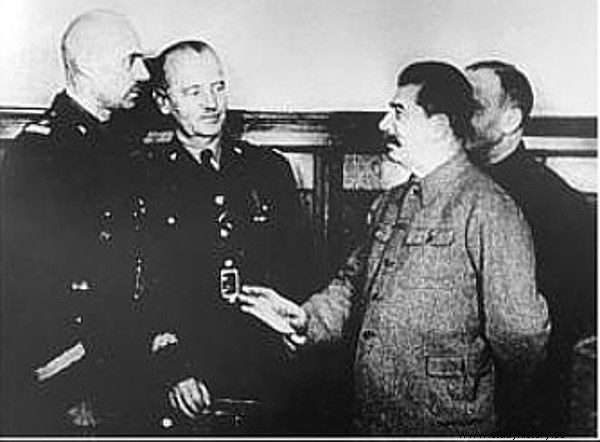
Although the agreement between Poles and the Soviets assumed equal treatment of all citizens of the Second Polish Republic, the reality turned out to be different. In the photo, General Władysław Sikorski and General Władysław Anders at a meeting with Stalin (photo:public domain).
As understood by the Soviets, the citizens of the so-called Western Ukraine and Western Belarus who were not of Polish nationality were not conscripted into Anders' army. It was considered that they all automatically acquired the citizenship of the USSR.
In the years 1940–1941, these people were drafted into units of the Red Army. Most often they were directed, as an uncertain element, to construction battalions, the so-called costumes. There is a known case when soldiers from one of such units, who came from the Borderlands, rebelled openly and demanded that they be transferred to the Polish army.
An army for the chosen
As soon as they could, the Soviets made it difficult for recruits of non-Polish origin to join Anders' army. In early January 1942, they decided that the conscription would only be carried out by their own recruitment committees, the so-called wojkomaty.
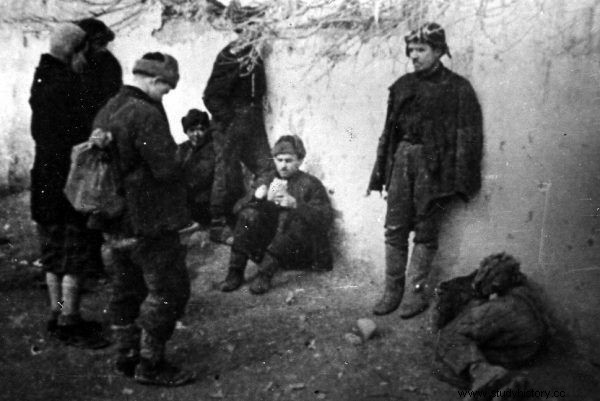
Recruits to Anders' army, freshly released from labor camps (photo:public domain).
Sometimes, in order to question the "Polishness" of a conscript, it was only his appearance or the sound of his surname. In addition, the Soviets spread rumors that the Polish authorities discriminated against minorities national .
In December 1942, i.e. after leaving the USSR, the Polish command conducted a national and religious census. Anders' army numbered 67,700 officers and privates at the time.
Nationality other than Polish was declared at that time by 4,978 people, i.e. over 7% of the army's population. Of this number, Jews constituted the largest group (approximately 71%), followed by Belarusians (16%) and Ukrainians (12%). However, these numbers are understated, as some soldiers hid their true origin.
The Great Escape of the Jews
Many Poles from Kresy must have remembered very well some Polish citizens of Jewish origin who eagerly welcomed the Red Army. The Jews, however, soon learned what it meant to live in the "Soviet Paradise". In the years 1939–1941 over 70 thousand. of them were deported to Siberia.
Joining the Polish army was the only chance to get out of hell. Nevertheless, the Jews led the way in the infamous desertion statistics. Already in Buzuluk in 1941, 250 of them escaped as a result of rumors about the bombing of Kuybyshev. Another 60 conceded on the eve of the arms deal.
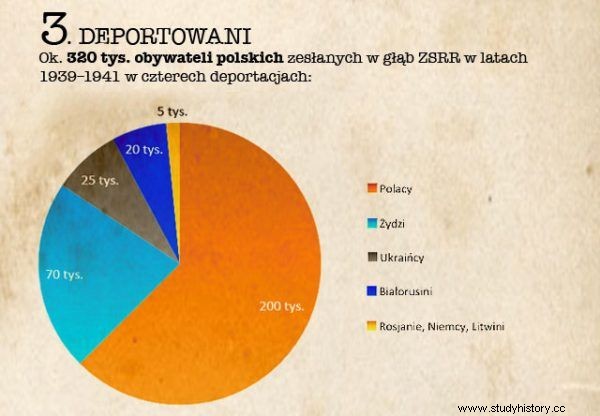
Among the Polish citizens deported deep into the USSR by the Soviets there were, among others 70 thousand Jews and 45 thousand. Belarusians and Ukrainians. Many of them later ended up in Anders' army (part of our infographic on the victims of the Soviet occupation).
About 5,000–7,000 Jews, including 3,500–4,000 soldiers, evacuated from the USSR with the Polish army. Further desertions took place on the territory of Palestine in the fall of 1943. More than 3,000 trained and armed soldiers of the Mosaic faith left the Anders Army. Among them was Cadet Corporal Mieczysław Biegun, or Menachem Begin, the future prime minister of Israel.
Star of David heroes
The reasons for desertion were different. Some of them were undoubtedly inspired by the Soviet services. They wanted to divide the two nationalities, spreading rumors of alleged anti-Semitism in Polish troops. Most of the fugitives intended to join Jewish underground independence organizations like the Hagana.
It is puzzling that the Polish command, despite pressure from the British, did not agree to take any consequences against the refugees. As Anders himself said: they stayed at home and want to fight for their own free country .
About 1,000 Jews remained with the Poles, who later fought in Italy. A significant number of them served as doctors in sanitary units and hospitals. As Norman Davies notes in The Trail of Hope, this is hardly surprising given that before the war, Jews were a large part of the medical profession .
One of the Jewish surgeons, Lieutenant Dr. Adam Graber, died in the top medical service during the fights at Monte Cassino, while operating on the wounded. A total of 28 Jewish soldiers were killed and 69 injured. For their heroism on the battlefield, they were awarded 6 orders of Virtuti Militari, 68 Crosses of Valor and 52 Crosses of Merit.
"We want to belong to Poland"
Belarusians willingly joined the Polish army. They were the only nationality group that did not present practically any problems . The proof of their loyalty may be a memorial written in September 1942 in Tehran, addressed to General Sikorski.
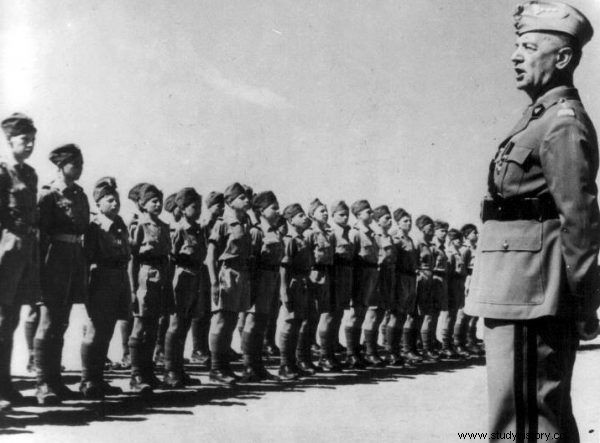
General Władysław Sikorski visits the Polish school of cadets (juniors) in the Middle East in June 1943. He could have been calm then about the loyalty of Belarusian soldiers (photo:public domain).
Its authors expressed gratitude on behalf of all Belarusians for their help in getting out of the USSR. They also denied the Soviet theory of voluntary joining of eastern Poland to the Soviet Union. Moreover, they stated that: We want to belong to Poland. The Polish Government is our Government .
There were also cases of desertion among Belarusians, most often as a result of agitation by Soviet agents located in Polish units.
Can you trust them?
Ukrainians formed the third largest national minority in Anders' army. Reading the reports of our authorities, it is not difficult to get the impression that Poles were rather distrustful of them. Some were suspected of supporting Ukrainian nationalists.
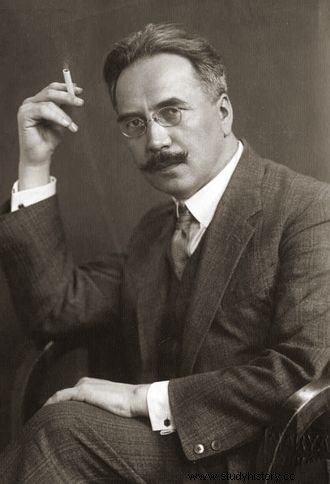
Stanisław Kot, Minister of State in the Middle East in 1942–1943 (photo:public domain).
This seems in part justified. According to a report from September 1943, w the Polish army in the east had 28 Ukrainians who belonged to the OUN . Stanisław Kot, who was the minister of state in the Middle East at the time, described his observations as follows:
(...) as long as Belarusians did not show too much national dynamism and remembered that they were Polish citizens, Ukrainians were characterized by enormous national dynamism, even greater than in Poles, deep conviction that Poles will never return to the eastern territories.
The data on the number of soldiers of Ukrainian origin are quite divergent. Norman Davies lists it in the "Trail of Hope" at a minimum of 5,000, but emphasizes that there could have been many more - as already mentioned, many recruits did not admit their nationality.
At least two of them, Andrzej Łajka and Jerzy Andrzejew, were honored with the Monte Cassino Commemorative Crosses. Mykola Kozij, another Ukrainian soldier of Anders' Army, claims in his memoirs that the conqueror of the first German bunker in this battle was a Volhynian Mykhailo Pankiwets.
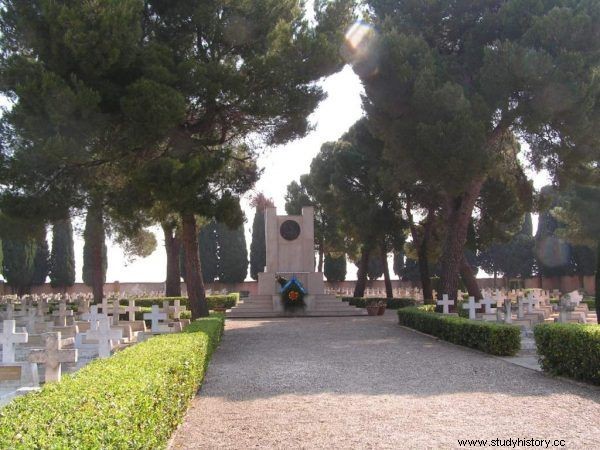
Polish war cemetery in Casamassima, Italy. Representatives of several nationalities are resting on it side by side (photo:Porcullus, CC BY 3.0).
Lithuanians, Tatars, Armenians ...
The Anders Army also included a small contingent of other national minorities in Poland. Lithuanians in Buzuluk formed their own battalion and even had a pennant in their national colors. There were also Tatars and Armenians.
The Armenian was, inter alia, Major Melik Somchjanc, a pre-war officer of the Polish Army and a veteran of 1939. In the final attack on Monte Cassino, after the death of Lt. Col. Karol Fanslau, he took command of the 4th Carpathian Rifle Battalion, which conquered Hill 593 under his orders.
Of course, the main backbone of the Anders Army were Poles. However, one should also remember and appreciate the contribution of soldiers of other nationalities to the joint fight against Nazism. The evidence that they were all faithful soldiers of the Commonwealth are their graves in Polish war cemeteries in Bologna, Casamassima, Loreto and Monte Cassino.
